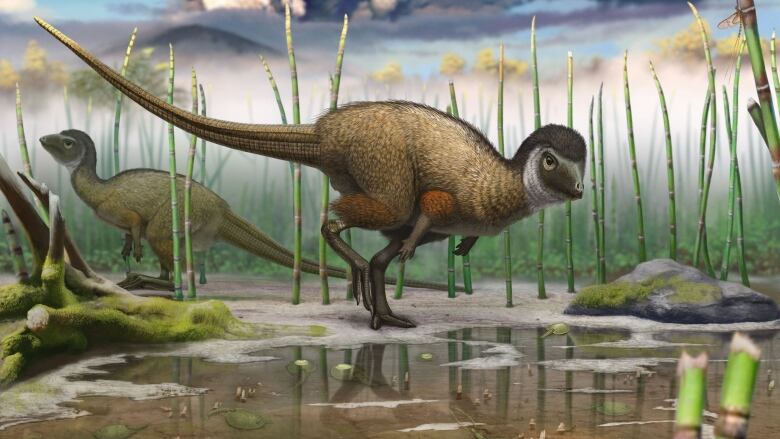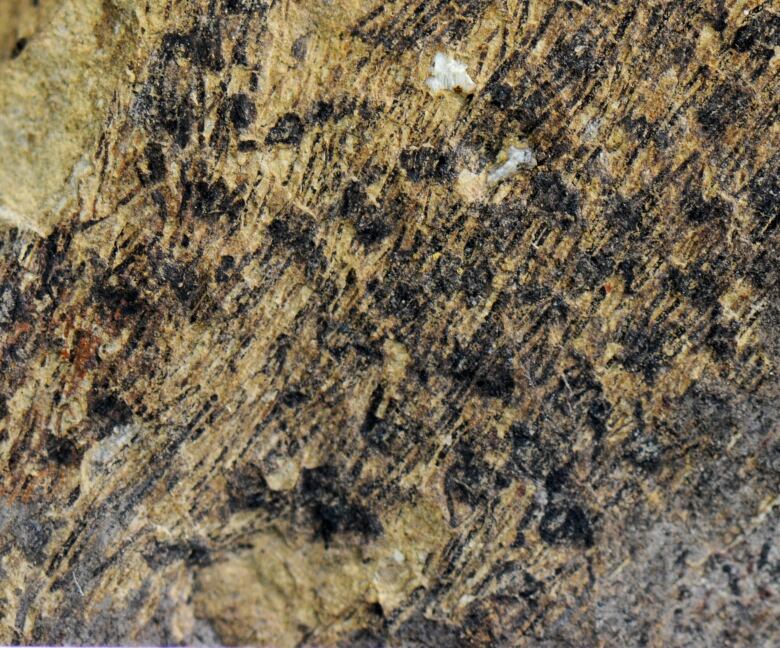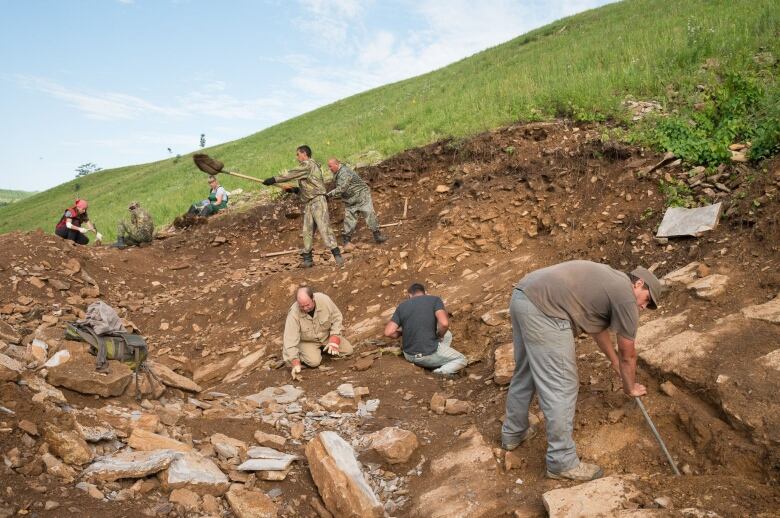Feathered plant-eating dinosaur found
Study suggests most dinosaurs may have had feathers

Fossil feathers have been found on an early plant-eating dinosaur for the first time, raising the possibility that all dinosaurs were downy, not scaly.
The Kulindadromeus zabaikalicusbelonged to a group of plant-eating dinosaurs called ornithiscians, which included the duck-billed hadrosaurs, and armoured stegosaurs and ankylosaurs.
Previously, the only dinosaurs known to have feathers were the theropods, a group of meat-eating dinosaurs thought to be the direct ancestors of birds.

According to Pascal Godefroit, lead author of astudy describing the newly discovered dinosaur, ornisthischian dinosaurs had previously been found with simple bristles or quills, but scientists weren't sure if those were really feathers.
"Our new find clinches it: All dinosaurs had feathers, or at least the potential to sprout feathers," said Godefroit, a paleontologist at the Royal Belgian Institue of Natural History, in a news release.
In the study published this week in the journal Science, Godefroit and his colleagues in Russia, France, Ireland and the U.K.reported that Kulindadromeus was found in Eastern Siberia and lived about 160 million years ago It was about 1.5 metres long, anditsproportions suggest it was about the size of turkey. It had scales on its tail and shins and short bristles on its head and back.
Similar to chicken down
But its most exciting parts of its attire werethe feathers on its arms and legs. Each wasup to 1.5 centimetres long and made of up of six or seven filaments joined together. They "resemble the down feathers of some modern chicken breeds, such as the Silkie," the researchers wrote.

They added that the discovery bolsters the evidence that the bristles and quills found in other ornisthicians really were early feathers, andthey likely arose for insulation and communication.
"In any case, it indicates that those protofeather-like structures were probably widespread in Dinosauria, possibly even in the earliest members of the clade," they said.
In a news release, they added that smaller dinosaurs were probably covered in feathers that "may have been lost as dinosaurs grew up" and no longer needed the extra insulation.
Not all paleontologists are convinced that the structures found on Kulindadromeus's body were feathers.
Paul Barrett at the Natural History Museum in London told BBC News that they looked like "little streamers coming from a central plate."
Barrett appeared to disagree with the study authors' opinion that the structures looked like Silkie chicken down feathers.
He added, "No bird has that structure in any part of its plumage and none of the developmental models that biologists use to understand the evolution of feathers includes a stage that has anything like that kind of anatomy."
According to Maria McNamara, a University College Cork researcher who worked on the new study, feathers and hair are rarely preserved in fossils because they tend to be removed from the body by scavengers after an animal dies. In this case, a rare stroke of luck meant the body was washed away by a river before this could happen, and promptly buried in mud with very little oxygen, preserving the feathers.












_(720p).jpg)


 OFFICIAL HD MUSIC VIDEO.jpg)
.jpg)



























































































